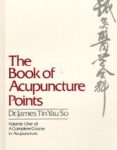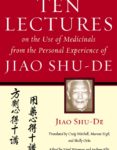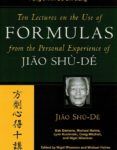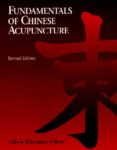Overview
Hara Diagnosis presents the theory and practice of abdominal diagnosis with the greatest care ever applied to an important diagnostic technique. Beginning with a historical and cultural perspective on the use of palpation in general, and abdominal palpation in particular, the book details the information required to master and extend the techniques presented. Included are important descriptions of the role of emotional, mental, and spiritual aspects of Chinese medicine. Detailed etymologies, descriptions of historical context, and quotations from classical sources are used to provide a range of insights into hun, po, zhi, jing, and shen, as well as many other seminal concepts.
This text offers an exceptionally well detailed exploration of interior meridian pathways and the role of classical Chinese energetic anatomy, including concepts such as source and origin of qi. The chapters on the dynamics of the triple warmers and the scientific exploration of the qi paradigm are widely regarded as having set a new standard for the relationship of traditional Oriental concepts and Western research.
However, Hara Diagnosis is also an extremely practical text. There are detailed, step-by-step procedures for practical diagnosis and therapy, all of which are accompanied by useful illustrations and case histories. The treatment systems described are coordinated through the abdominal patterns and are staged from the general to the specific. These include hara shiatsu, sotai and breathing exercises, and five-phase treatments. Clear instructions are provided for using Manakas ion pumping cords, mu point diagnosis, O-ring diagnosis, and secondary diagnostic and treatment strategies such as palm diagnosis.
Hara Diagnosis provides not only useful therapeutic and diagnostic information, clinical and theoretical insights, but a general approach to the understanding of acupuncture that draws East and West ever closer.
Author Information
Kiiko Matsumoto
Author: Five Elements and Ten Stems, Extraordinary Vessels, Hara Diagnosis.
Kiiko Matsumoto received her BS from Tokyo Kasei University. Ms. Matsumoto studied acupuncture at the Japan Central Acupuncture and Moxibustion College of Tokyo. Her additional studies included classical and modern Chinese as well as Sotai, a specific practice of manipulative therapy. Currently Ms. Matsumoto resides and practices in Boston, Massachusetts, and lectures and teaches worldwide.
Stephen Birch
Author: Chasing the Dragons’s Tail, Extraordinary Vessels, Five Elements and Ten Stems, Hara Diagnosis, Extraordinary Vessels.
Stephen Birch received his BA from the University of Hull and his PhD, Exeter University. Dr. Birch is a graduate of the New England School of Acupuncture (NESA). He undertook private study in Japan with Yoshio Manaka and with Kodo Fukushima. After teaching at NESA for many years, he moved with his family to Amsterdam, where he currently resides and maintains his clinical practice. He lectures and teaches worldwide, and is extensively published in the field of acupuncture. He taught at the New England School of Acupuncture until 1993 and since then began teaching in many locations. Since 1998 he has taught extensively around Europe and Australasia, introducing Japanese acupuncture to many practitioners in Europe. He is the most senior teacher outside of Japan of Toyohari, probably the advanced Meridian Therapy system. He organizes and teaches Toyohari programs in Amsterdam.He has a PhD on acupuncture research (1997) and worked on studies at Harvard and Yale Medical Schools. He is founding past-president of the Society for Acupuncture Research, has consulted on and participated in various studies in Germany, UK, Australia, Holland, Norway, Korea. He has authored dozens of scientific studies, and since 2008 is Associate professor in Norway at the Kristiania University College, Department of Health Sciences. His most recent work involves reviewing the acupuncture literature, sham acupuncture research problems, pattern identification research. He is interested in bringing traditional practice into a more realistic scientific setting so that it can be better investigated and incorporated into health care practice.
He has practiced Japanese acupuncture for thirty-four years, first in the Boston, then Connecticut and since 1998 in Holland. He practices at the Japanese Acupuncture Center in Amsterdam, Holland since 1999 with Junko Ida.
Visited 1936 times , 2 Visits today






The value of palpation as a diagnostic tool is its objectivity. While pulse diagnosis is thought of as the most important of the Chinese medical diagnostic techniques, palpation nonetheless has an extensive history. Developed by the Japanese to a fine art, we suggest Hara Diagnosis for those who wish to expand their clinical skills.